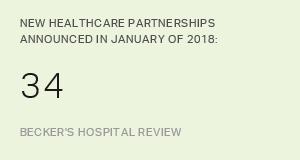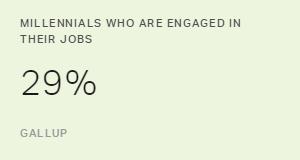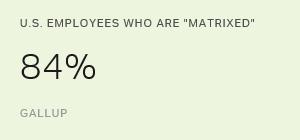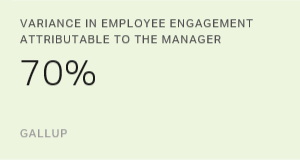Element 1 Expectations
Explore Gallup's research.

Lean into the critical aspects of employee engagement to help leaders communicate and establish stability more effectively.

Learn how to clarify expectations -- even amid agile and matrixed structures -- by focusing on the one real solution: the conversations your managers have.

Learn how to lead productive and engaging meetings. The kind of meetings that make people actually want to show up.

Learn how HR leaders can manage change for a smooth transition during mergers and acquisitions.

Just 29% of millennials are engaged in their jobs. They'd be more committed if they received job clarity and were held accountable for their performance.

Teams' structures are surging, replacing old hierarchies. But is more teamwork better? Not unless teams are managed the right way.

The holiday season comes with a heightened sense of urgency and even chaos for employees, especially those in retail.
At some point in their career, one in two employees left their job to get away from their manager to improve their overall life.
35% of U.S. Managers Are Engaged in Their Jobs
How does employee engagement move through an organization? Does it begin in the executive suite and move down through managers to frontline workers? Or does it come from all different directions? Gallup researchers set out to tackle these essential leadership questions.
Making sure employees know what's expected of them at work is the foundation of management. Supported by decades of Gallup research, the authors of 12: The Elements of Great Managing explain why.
In creating their brand images, businesses typically focus on the external world. They take a walk outside the organization to see how they look through the eyes of the prospects and customers they hope to entice. But too often, those companies overlook an audience that's every bit as important as the external one: the employees who "live" the brand every day.
How a focused and determined new manager of an underperforming hotel tightened expectations, showed the staff their potential, and turned the property's finances around.
More than 90% of the country's workforce isn't engaged at work. And that's just one alarming statistic from a recent Gallup study. How should Japan's executives tackle this problem?
Soon after assuming responsibility for a Best Buy store, one of Eric Taverna's big challenges was to harness the energy of his employees. His approach -- and its positive, long-term effects -- offer lessons to managers across all industries on how to build a committed workforce.
As more Thai firms try to compete in the global market, they learn that the quality of their people is critical to winning business. Those firms often start by asking "How do we select talented employees?" But a smarter question would be "How can we keep our talented employees?" -- because the financial implications of losing a single talented worker are enormous.
Most pay systems reward equality, not excellence. They repel top performers and coddle the mediocre. Is your company's performance plan driving away your best people?
How well do you set expectations for your sales team? You might be surprised by how poorly your reps rate your performance in this critical area. Here's how to make sure you are communicating clearly -- and in a way that delivers measurable results.
Engaged employees are more productive, more profitable, and more customer-focused, and they're less likely to jump ship. But most companies struggle to engage their workers -- in fact, Gallup research shows that 70% of U.S. employees are not engaged at work. Why are businesses so ineffective at engaging their people? And what can they do to build workplaces that foster higher levels of employee engagement? This special report offers powerful solutions.